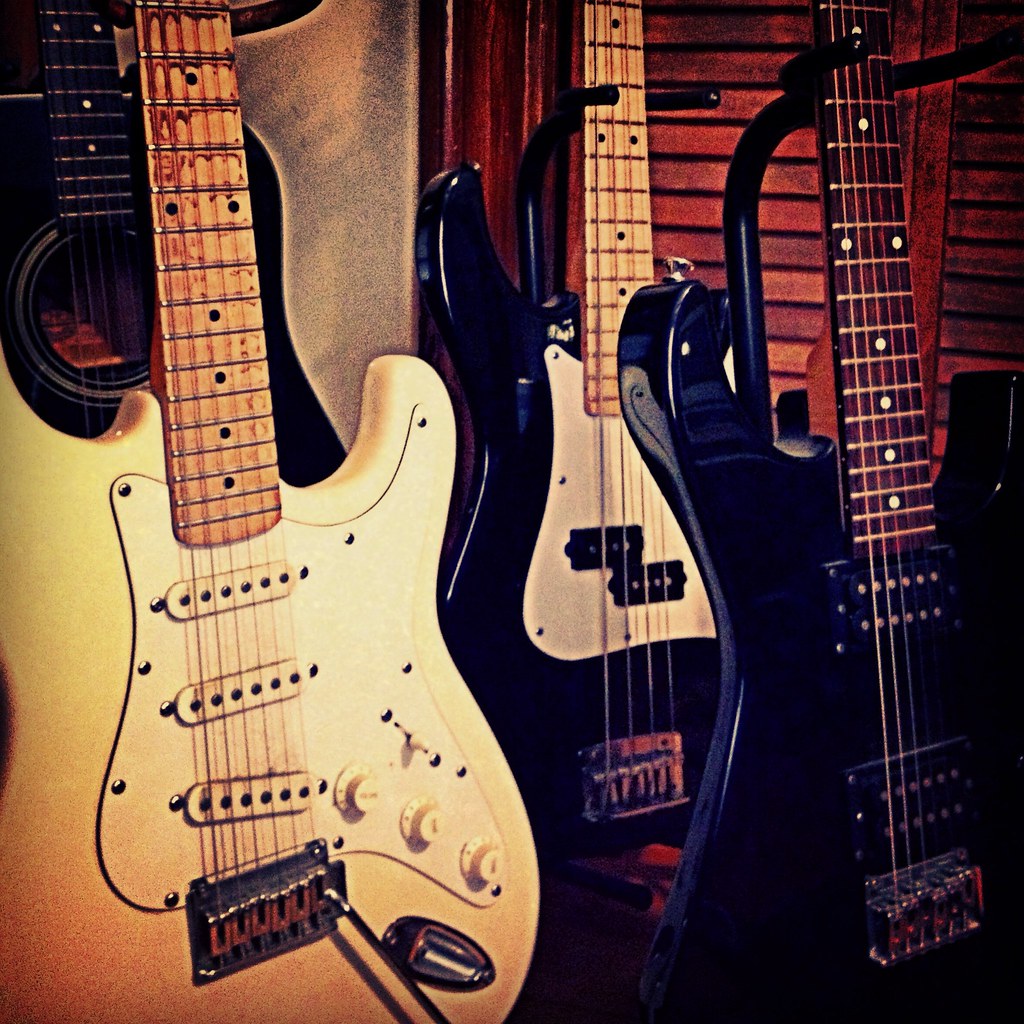Similarities
Since I’ve been playing bass guitar for over half of my life, it seemed like a good idea to identify the similarities between guitar and the bass guitar. The most pragmatic similarity between the two instruments is the identical tuning of the four “lowest” strings – here I mean lowest as the strings with lower tones. Since these strings are tuned the same, the relationships between notes are the same. Examples of these relationships are 3rd, 5ths, octaves, and many others.
Another similarity is the preservation of major and minor scales on the four lowest strings. This means that I am able to approach the guitar in almost the same way that I play bass guitar for building riffs. Where the guitar departs from the bass is in the use of additional scales that are not major or minor. These include but are not limited to the pentatonic scale (major and minor), the natural minor scale, and the blues scale. A good resource for learning some of these scales can be found at guitarlessons.com.
A concept that isn’t often used when playing bass guitar is chords. Chords simply refer to playing more than one note at a time. Chords are named using their root note (the lowest tone in the chord) and the scale they are built with. Some examples of chords include A, Dm (D minor), and Am6 (A minor sixth). I’m not sure of what exactly the numbers in the chords refer to but I suspect they refer to added or replaced notes in the standard version of that chord. This will require further investigation.
Chord Construction
Two methods are identified in How Major Chords Are Made: the major scale method and the stacking thirds method. The most natural method for me to start building chords is the major scale method. To built a chord using this method, you simply start with a note (the root note) and play the 3rd and 5th notes from the corresponding major scale. An example: say you start with the G note, to for the G major chord you identify the 3rd note in that scale (B), the 5th note in that scale (D), and play them all at once. The only other required piece of knowledge for playing chords determining which strings can be used to form notes so that fingering is possible. In other words, there are several places on the neck you can play a B note, but you need to play it close to your root note so you can form it on one hand.
The other method, stacking thirds, was confusing for me since I’m not fully familiar with the intervals (thirds, fifths). This is an area that requires development if I’m going to understand guitar theory at deeper levels.
Next Time
For my next post, I plan to start learning scales and chords by practicing commons ones and building less common ones. I will also include some audio recordings of my playing so I can track my dexterity and quality of playing.
Feature Image
“Guitars” by Chris_Hawes is licensed under CC BY 2.0






